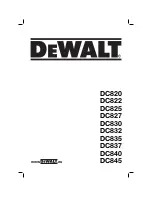
SAMLEX AMERICA INC. | 13
sectIOn 7 |
solar Panel Installation
1. Stainless steel can be subject to a process called “thread galling” in which bolts can twist off and/or the
bolt threads seize to the nut’s thread. Apply Anti-galling Lubricant available at most hardware or auto-
parts stores to all the stainless steel fasteners before installation. If anti-galling lubricant is not available,
any standard lubricant will minimize the occurrence of “thread galling”.
2. fix the mounting brackets (fig. 7.2) to the frame of the previously positioned solar panel using the slotted
opening and the ¼”-20 x ¾"flange bolt, Nylon Locknut and flat washer (fig. 7.1).
3. Using a 7/16” wrench, tighten the nuts to secure the mounting brackets to the PV panel. recommended
tightening torque is 15 lbs.
4. Position the panel with the attached mounting brackets at the desired location on the rV roof and mark
the position of the desired mounting hole using a suitable marker by tracing the hole on the mounting
bracket. Please ensure that the mounting surface on the rV roof is strong enough to support the
mounting hardware, solar panel and wind loads.
5. The centre and end holes on the mounting brackets (fig. 7.2) are sized to accept the ¼” hardware
supplied with the unit. If the use of larger sized hardware is desired, 3/8" holes can be used.
solar module
1/4” -20x3/4” flange bolt
1/4” flat washer
1/4” locknut
mounting bracket
RV roof
1/4” holes
3/8” holes
Fig. 7.2. 5-Hole Mounting Bracket.
Fig. 7.1. Attaching solar panel to
5-hole mounting bracket.
Well Nut for anchoring Solar Panel to RV Roof
6. A Well-Nut is a bushing of tough Neoprene rubber with a flange at the top end and a captive brass nut
mounted within the bore at the bottom end (fig. 7.3). Tightening a conventional machine bolt or screw
engages the captive nut thereby causing the bushing to expand outwards. This fastens securely to thinner
rV roofs by bulging up and against the bottom surface of the roof (fig. 7.6). If used in a blind hole in a
solid surface material, the rubber will expand outwards to create a secure fastening
(fig. 7.7). The Neoprene and brass resist most environmental conditions.
flange
1/2” diameter
1/4” captive brass nut
Fig. 7.3. Construction of a Well nut














































